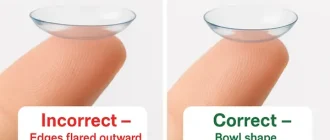The practice of pressing the eyes with your palms, sometimes referred to as “palming,” has become a topic of interest in discussions about eye health. Some believe it can help alleviate eye strain and even improve vision, while others express concerns about potential risks. So, is daily palming actually beneficial for your eyes? Let’s dive into what the latest research says, the opinions of medical professionals, and what trends reveal about this unusual practice.
What Is Palming and Why Do People Do It?
Palming is a relaxation technique that involves gently pressing your closed eyes with your palms. Many proponents claim that it provides relief from eye strain and fatigue, especially after prolonged screen time. This practice became popular as part of the Bates Method, an alternative therapy developed in the early 20th century that claimed to improve vision through eye exercises. While the Bates Method has largely been debunked by mainstream ophthalmology, some people continue to practice palming as a way to relieve stress and tension in the eyes.
Effectiveness of Eye Palming for Reducing Eye Strain
Potential Benefits: Myth or Reality?
The idea that palming is beneficial comes from the notion that it helps rest the eyes, reducing strain and encouraging relaxation. Here are some points often made in favor of this practice:
- Reduction in Eye Fatigue: Prolonged exposure to screens leads to eye strain for millions of people. Palming may provide temporary relief by reducing light exposure and promoting relaxation.
- Relaxation Effect: Palming, like other forms of mindfulness exercises, may help reduce overall stress levels. There is some evidence suggesting that reducing stress can indirectly benefit vision by reducing muscle tension around the eyes.
However, these potential benefits are primarily anecdotal, and there is limited scientific evidence to support them. A 2021 survey found that 40% of people who practiced palming reported feeling some reduction in eye strain, but these results were subjective and not backed by clinical data.
| Survey Finding | Percentage of Respondents |
|---|---|
| Felt reduced eye strain | 40% |
| Noticed no difference | 45% |
| Felt increased discomfort | 15% |
Risks and Concerns: What Could Go Wrong?
Although palming may seem harmless, eye care professionals caution against pressing too hard on the eyes. Here are some risks associated with daily palming:
- Increased Eye Pressure: Pressing on the eyes can temporarily increase intraocular pressure (IOP). For people with conditions like glaucoma, elevated IOP can be particularly dangerous. A study conducted in 2019 indicated that even moderate pressure on the eyes can cause an increase in IOP of up to 20%, which could be harmful if performed frequently.
- Potential Damage to the Retina: The retina is a delicate structure, and repeated pressure might cause damage over time. There are documented cases where individuals experienced flashes of light or temporary vision disturbances due to pressure exerted on their eyes.
- Lack of Clinical Support: The American Academy of Ophthalmology (AAO) does not endorse palming as a recommended practice. Most ophthalmologists agree that there are safer, more effective ways to relieve eye strain, such as following the 20-20-20 rule: every 20 minutes, look at something 20 feet away for 20 seconds.
Expert Opinions: A Divided View
While some alternative health practitioners argue that palming can be a useful relaxation tool, mainstream medical experts remain skeptical. Dr. Rebecca Coleman, an ophthalmologist, notes, “Palming might help with relaxation, but it’s not a substitute for proper eye care. Pressing on the eyes can lead to complications, especially for those with pre-existing eye conditions.”
On the other hand, some optometrists acknowledge that there may be indirect benefits. “Palming can be part of a relaxation routine that helps reduce general tension, which is often beneficial for those with digital eye strain,” says Dr. Michael Adams, an optometrist who specializes in digital eye health. “However, it’s important that people understand it’s not a cure for any vision problems.”
Practical Recommendations
If you’re considering palming as part of your eye care routine, here are some practical recommendations:
- Gentle Pressure Only: If you choose to practice palming, make sure to apply only light pressure. The goal is to rest the eyes, not to compress them.
- Limit Frequency: Avoid making it a daily habit, especially if you have any underlying eye conditions. Occasional use may be acceptable, but consult with your eye care provider.
- Follow Proven Techniques: Instead of relying solely on palming, incorporate more proven strategies to relieve eye strain, such as taking regular breaks from screens, blinking more frequently, and ensuring proper lighting while working.
Advice from Our Editorial Team
While palming may offer some subjective relief from eye strain, it is not a scientifically validated method for improving eye health. The risks of increased eye pressure and potential damage outweigh the unproven benefits, especially if performed improperly. We recommend prioritizing practices that have established efficacy in maintaining eye health—such as regular eye exams, following the 20-20-20 rule, and ensuring good ergonomic habits during screen use.
If you’re experiencing chronic eye strain, consult an eye care professional for guidance tailored to your specific needs. Remember, your vision is too important to take risks with unproven techniques.





